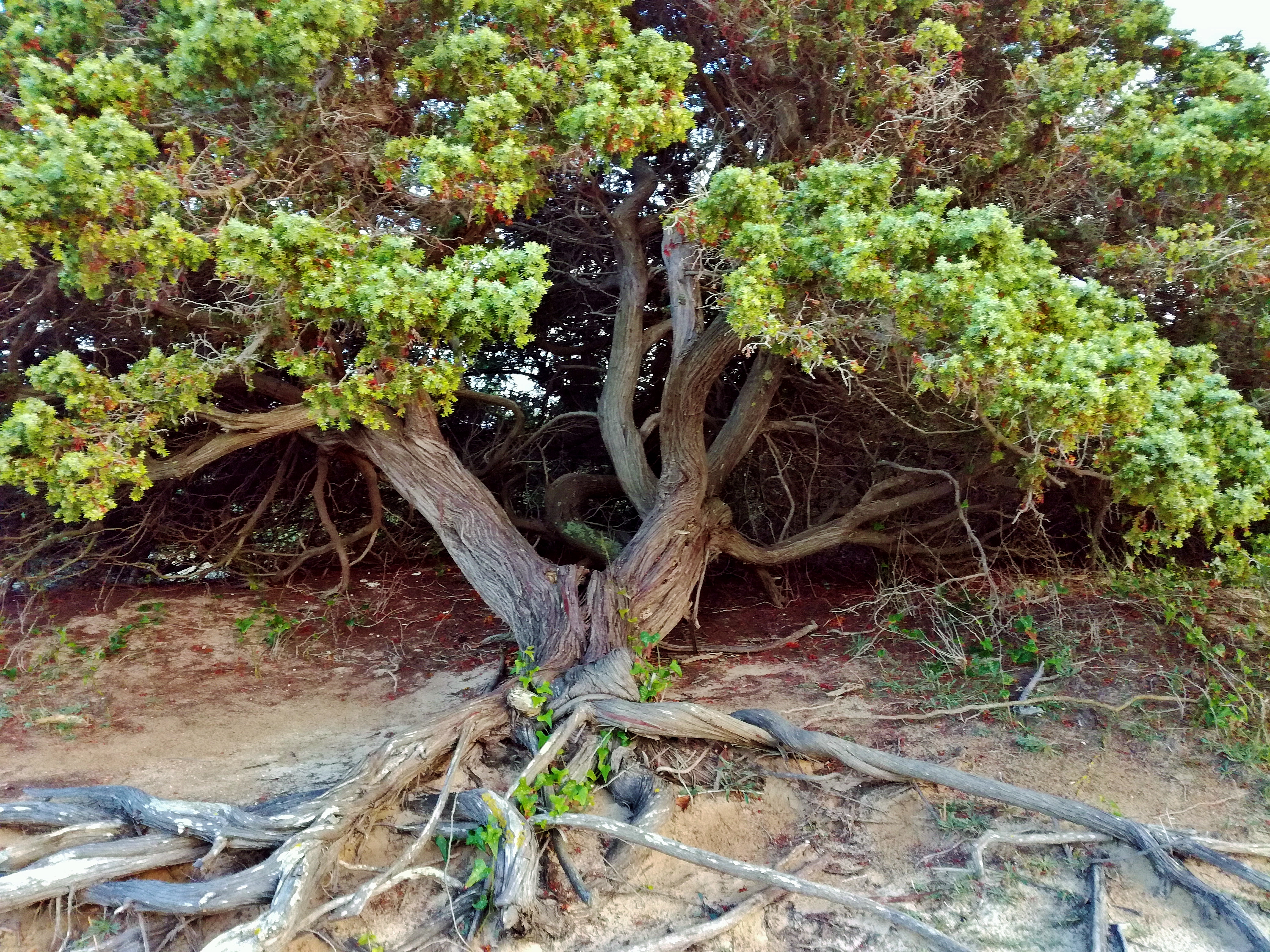
Torre Guaceto Prickly Juniper
This post is also available in:
 Italiano (Italian)
Italiano (Italian)
Torre Guaceto is a Nature Reserve north of the city of Brindisi; its name comes from the XVI century watchtower (“Torre”) that overlooks the area facing the sea.
It is an important place of naturalistic interest, not only at the regional level, stretching over some 2.743 acres and covering 5 miles of the Adriatic coastline. It is also an important Marine Reserve. The 5 islets parallel to the shore are also part of this area.
With the typical land and marine features, it is definitely one of its kind in Italy.
In the 1970s, a special Consortium was born, actively involving the Italian WWF Italy and the municipalities of Brindisi and Carovigno: it was aimed at protecting this priceless part of the national natural heritage.
Needless to say, the entire area is made of different ecosystems, set between the Marine Reserve and the Wetland. The latter features the Mediterranean scrub, a marshy environment, and some beaches. The vegetation includes several Mediterranean species, sea holly ( Eryngium maritimum), maritime euphorbia (Euphorbia paralias), and searocket (Cakile) along the edge of the shores – not to mention weed species capable of anchoring their rhizomes to the sand, and wondrous lavender cotton ( Santolina chamaecyparissus).
The prickly juniper ( Juniperus oxycedrus subsp. macrocarpa ) has found its ideal habitat to grow in the highest part of the sand dunes; it usually appears as a 6.56-ft high shrub but here it peculiarly grows like a tree: the local centuries-old specimens are incredibly rare as well. Its roots penetrate the sand dunes, providing strength and stability.
Botanical sheet of the prickly juniper
Juniperus oxycedrus subsp. macrocarpa
Also known as “red juniper”, due to the colour of its berries, the prickly juniper is actually a shrub or a small evergreen tree, belonging to the Cupressaceae family and typical of the Mediterranean scrub.
It is very resistant to droughts, salty winds and poor substrates.
In its spontaneous form, it is commonly found throughout central-southern Italy, while it’s very rare in the Po River Valley. It is a protected species in Lazio and Piedmont.
Its berries are used to prepare digestive liqueurs or to add a spicy flavour to meat dishes.
From the dry distillation of its wood, Cadè oil is obtained: a concoction already appreciated by the ancient Romans to embalm the dead and treat skin ailments.
Juniper wood is very hard and often used in carpentry for furniture, assorted tools and barrels.
Thanks to its very extensive root system, juniper is useful for soil consolidation as well.
According to some popular beliefs, it was a magical plant that kept snakes, diseases and evil spirits away.
This post is also available in:
 Italiano (Italian)
Italiano (Italian)
Contatti
72012 Carovigno, loc. Torre Guaceto(BR)
